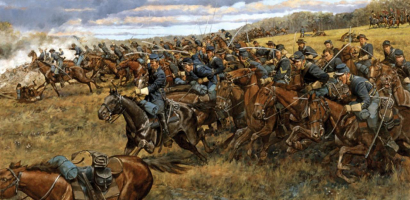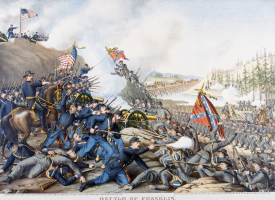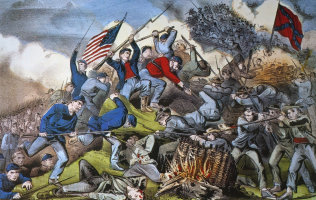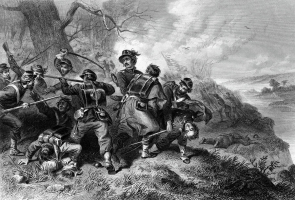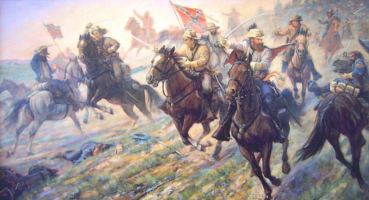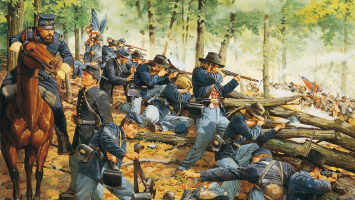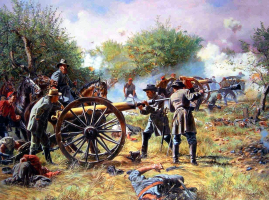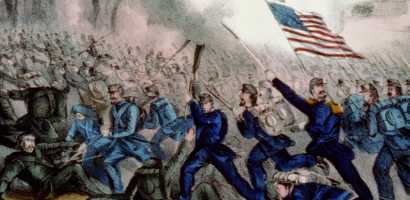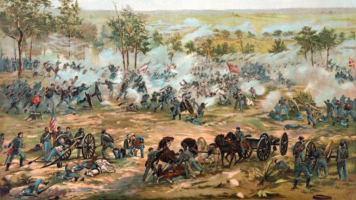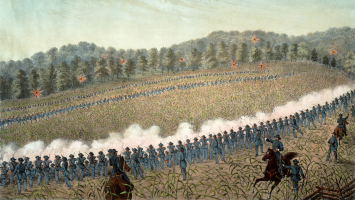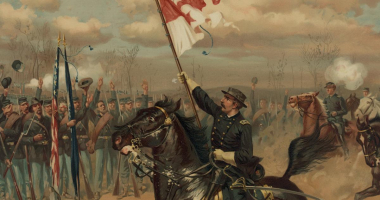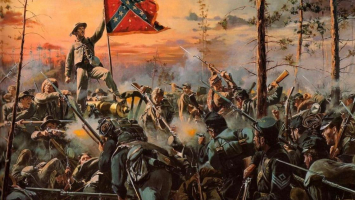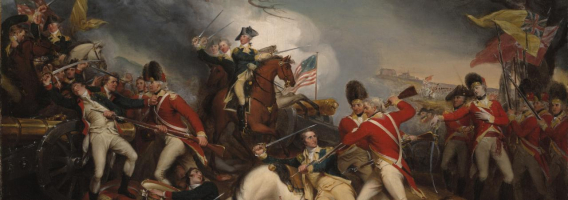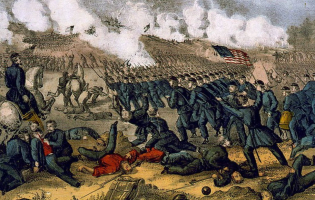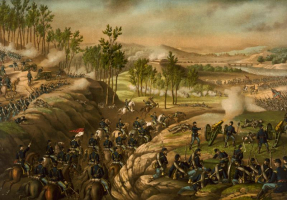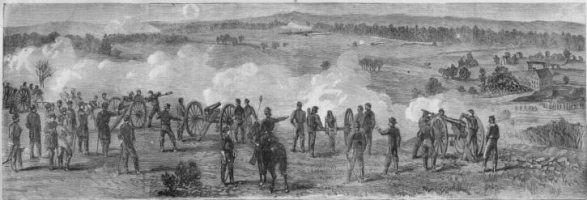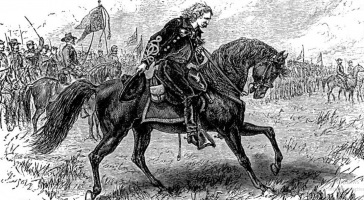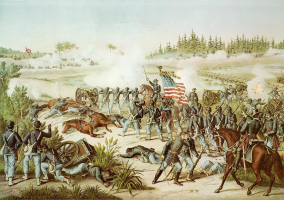Top 10 Facts About The Battle of Hampton Roads
The American Civil War's Battle of Hampton Roads, also known as the Battle of the Monitor and Virginia (which was reconstructed and renamed from the USS ... read more...Merrimack), or the Battle of Ironclads, was a naval conflict. On March 8 and 9, 1862, it took place in Hampton Roads over two days. The actual might of ironclad battleships would be discovered in Hampton Roads. The groundbreaking USS Monitor, with its armored rotating turret, would make its combat debut here. We hope that these fascinating details will deepen your understanding of and appreciation for this significant naval engagement from the American Civil War.
-
Ironclad battleships predated The Virginia and the Monitor. La Glorie, the first ironclad warship, was launched by the French navy in November 1859. In response to the new French warship, the Royal Navy had launched the iron-hulled frigate HMS Warrior in October of 1861.
Two ironclad ships, the U.S.S. Monitor and the C.S.S. Virginia, engage in one of the most well-known naval confrontations in American history on March 9, 1862, outside Hampton Roads, Virginia, and manage to draw it out. The Virginia and the Monitor engaged in combat for four hours on March 9 in the morning. The ships maneuvered around one another, vying for position as they exchanged gunfire. The iron ships just deflected the cannon balls. The Virginia returned to Norfolk in the early afternoon. Despite the fact that neither ship sustained significant damage, the Monitor successfully put a stop to the Union navy's brief period of dread at the hands of the Confederate ironclad.
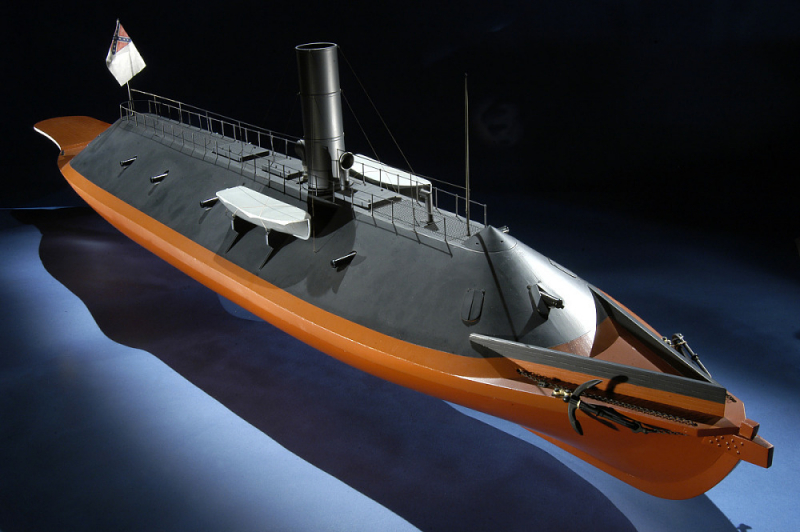
National Museum of American History 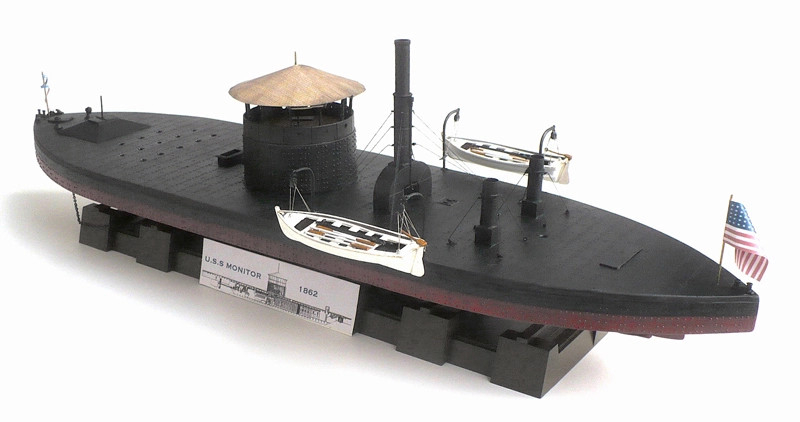
Free Time Hobbies -
In the months following Virginia's secession in April 1861, many of the U.S. Union forces were fleeing when the U.S. Navy was swiftly sunk or destroyed at the Gosport Naval Yard in Portsmouth. The top works of the USS Merrimack had been burned to the ground and scuttled. Merrimack was lifted out of the Elizabeth River's muck, placed on an unharmed graving pier, and outfitted with a lot of armor by the Confederates. The ship was given a new name: CSS Virginia.
In October of 1861, it was determined that Virginia (the converted former USS Merrimack) would need two layers of two-inch iron armor plate covering its entire casement. There just wasn't enough iron available to meet the requirement, which required more than 800 tons. Confederate efforts to make up for this acute shortage included tearing up hundreds of miles of railroad track, melting down outdated smoothbore artillery, and collecting old scrap iron. The Union had more time to build their defenses against Virginia's escalating threat thanks to the difficulties in collecting and shaping these iron plates.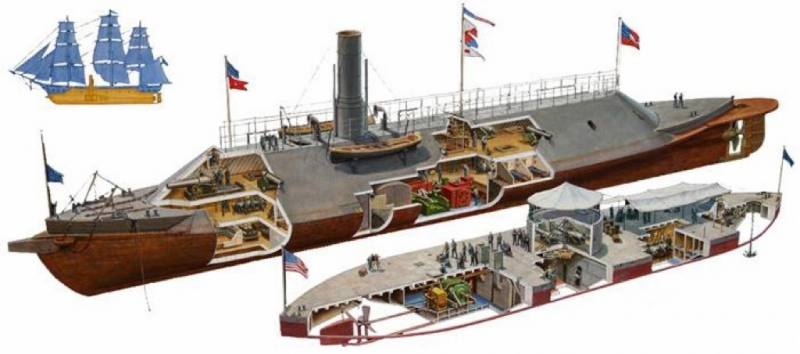
American Battlefield Trust 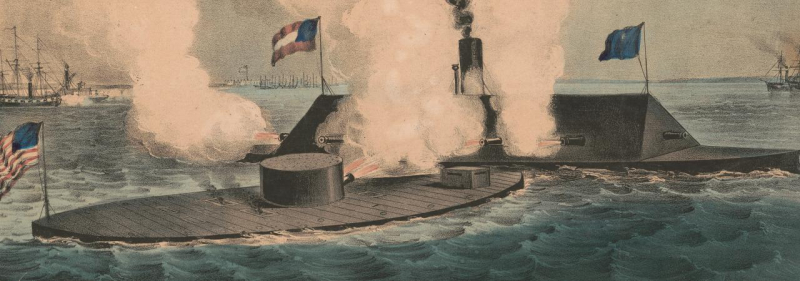
American Battlefield Trust -
The newly christened CSS Virginia is prepared for battle by early March 1862. On the morning of March 8, Virginia departs Portsmouth and steams downstream to assault the Union ships anchored there in an effort to scuttle the Union blockading ships in Hampton Roads. For its maiden journey, the Virginia generated steam and steamed slowly into the Elizabeth River. Franklin Buchanan, the Virginia's new captain, was not overly concerned about the fact that the engines had not been thoroughly tested or that the armored shields for her broadside gun ports had not yet been erected. There are two enormous 11-inch Dahlgren cannons mounted on the ship. Its distinctive look has earned it the moniker "cheesebox on a raft."
For his combative personality, Buchanan, who had been chosen as the Confederate Secretary of the Navy by Stephen Mallory, was determined to make the Virginia's first voyage an assault on the adjacent Union navy.
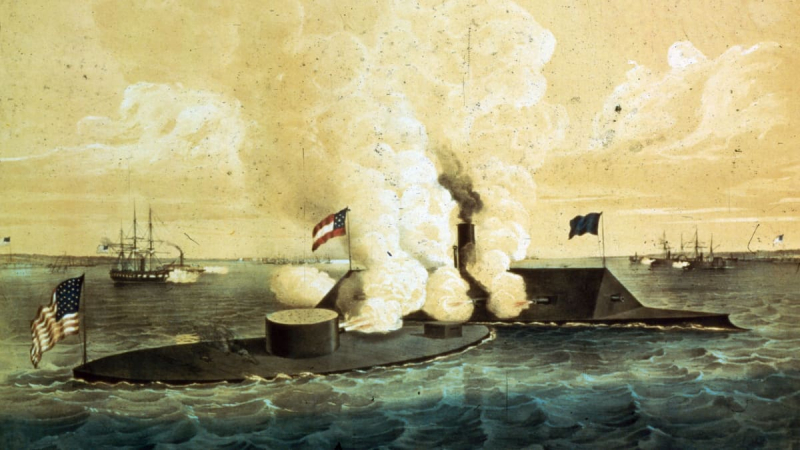
History.com 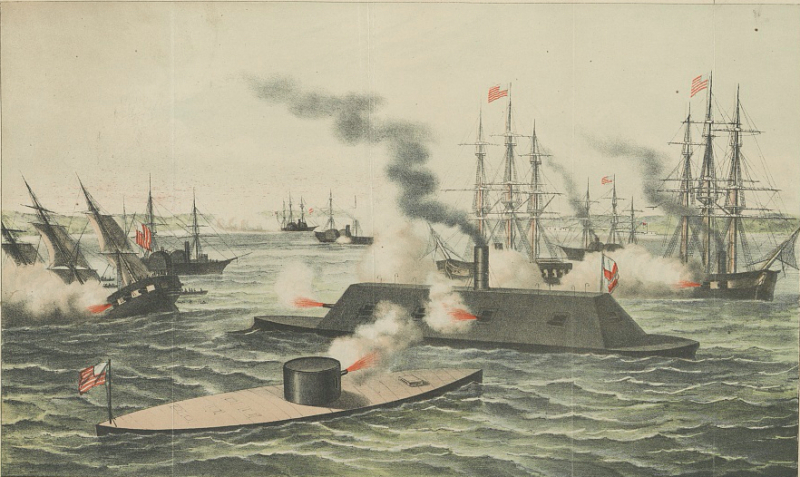
The Civil War Monitor -
Despite the various technological advances on show during the Battle of Hampton Roads, a massive, 1,500-pound iron ram mounted on the Virginia's bow was one of the most destructive weapons used. The USS Cumberland was completely destroyed by this crude weapon, which is eerily similar to what one might see aboard a Roman Trireme or an Ottoman Galley. The Virginia approached the Cumberland head-on and used its powerful ram to pierce through its starboard bow. Ironically, the Virginia's ram's fatal strike nearly resulted in its own demise. The Virginia ran the risk of being swept under by the sinking Federal ship since its ram was firmly embedded inside the Cumberland. After some effort the Virginia was able to separate and back away, but is lethal ram had broken free.
The Virginia attempted to use its ram during its engagement with the USS Monitor the following day, unaware that it now lay at the bottom of Hampton Roads.
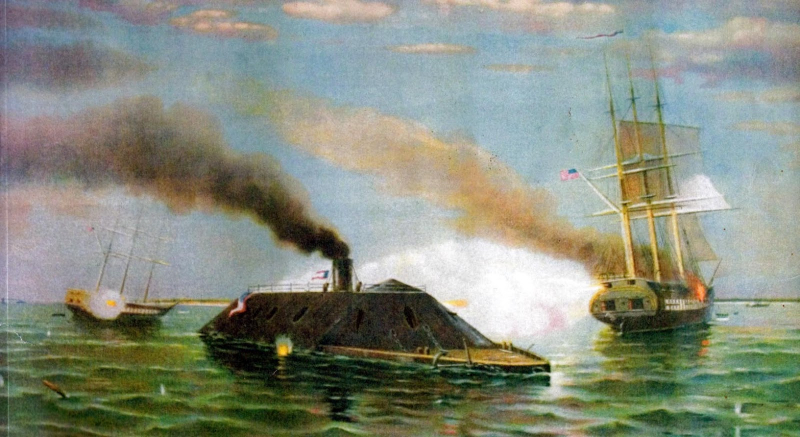
Hampton Roads Naval Museum 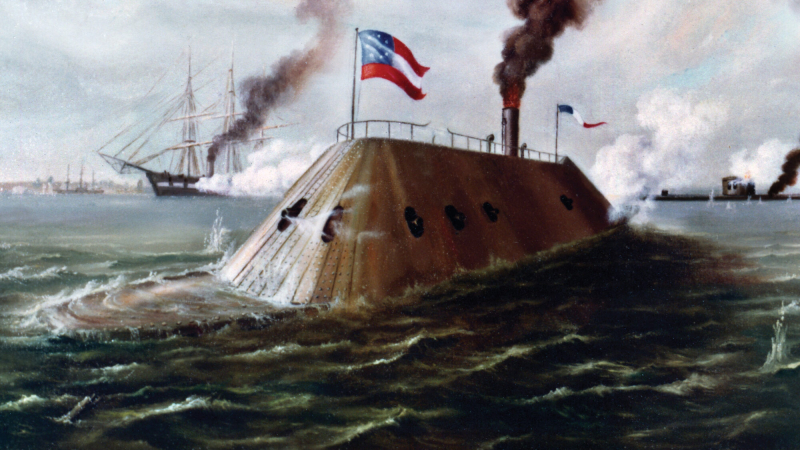
Warfare History Network -
It was normal for a losing ship and its captain to formally surrender to their victorious counterparts in accordance with the established rules created during the Age of Sail. Franklin Buchanan gave the order to take the Congress as a prize after observing a white flag flying over the damaged USS Congress. Unfortunately for the Confederates, neighboring Union soldiers understood little to nothing about maritime customs and opened fire on the exposed officers and men. Franklin Buchanan was shot in the upper thigh and hastily sent back into the interior of Virginia after having gone on deck to oversee this capitulation. Virginia stops its attack and retreats to the safety of the Elizabeth River as the sun sets and its captain requires medical attention.
As one of the injured, Captain Buchanan left his executive officer, Lieutenant Catesby ap Roger Jones, in charge on March 9, 1862. Jones has shown himself to be just as hostile as the person he replaced.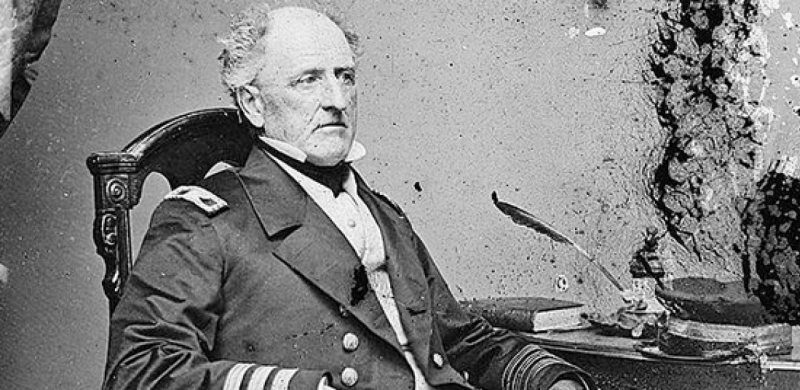
American Battlefield Trust 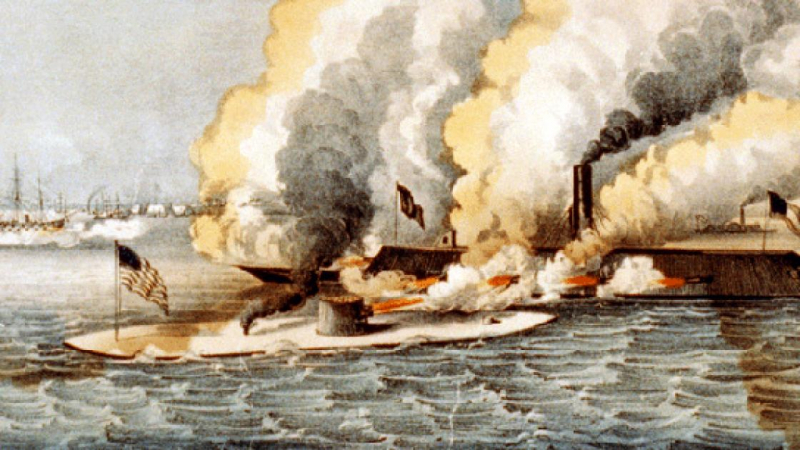
American Battlefield Trust -
Although the nearly bloodless combat between the Monitor and Virginia on March 9, 1862, received most of the attention, the previous day's conflict between Virginia and the US Navy was much bloodier. Virginia attacked the USS Cumberland, killing 121 of the 376 crew members on board, and then attacked the USS Congress, killing 120 of the 434 crew members, or 27% of the crew. In contrast, the CSS Virginia only lost two people and injured twelve others during its conflict with the Union navy.
More people were killed and injured in the two-day combat against Virginia for the Federal fleet than in any other sea action in American history at the time (261 dead and 108 wounded). And until the Japanese navy attacked the American fleet at Pearl Harbor on December 7, 1941, and March 8, 1862, remained the bloodiest day in American naval history.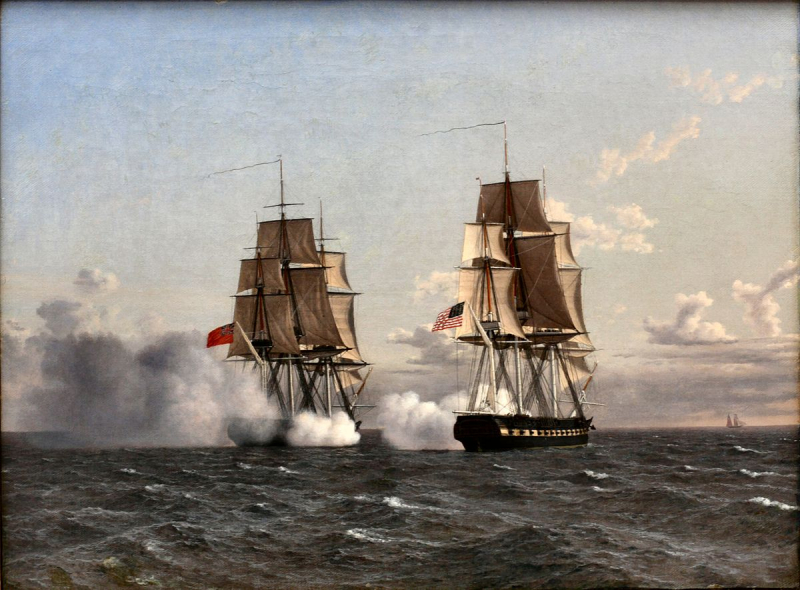
Wkipedia 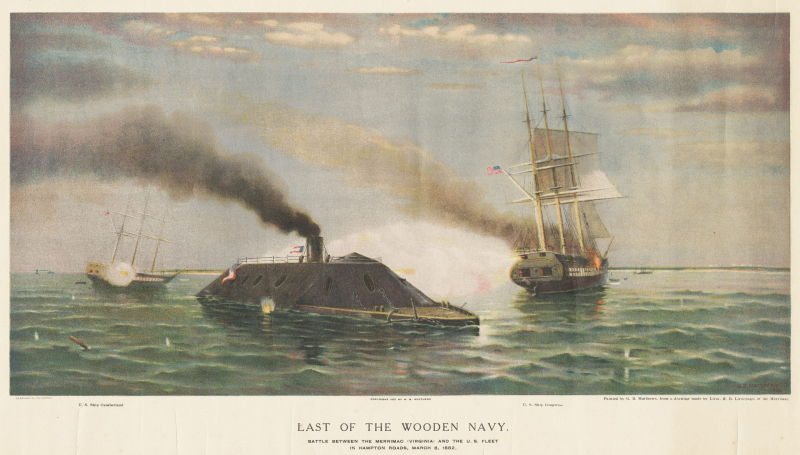
Encyclopedia Virginia -
The Confederates were persuaded of the folly of wasting shells and powder on the Monitor after two hours of close-range naval gunfire. When asked why his gun crews on Virginia had stopped firing at the Monitor, Lieutenant John Eggleston responded, "[a]fter two hours of incessant firing I find that I can do the Monitor about as much damage by snapping my thumbs at her every two minutes and a half."
Virginia only had explosive shells rather than solid shots, which further decreased its ability to penetrate armor. At one point during the conflict, the crew of Virginia resorted to trying to shoot muskets into the Monitor's open gun ports. In order to find safety in shallow water where deep-draft Virginia cannot follow, the Monitor disengages and moves there. Sensing that their shells could do little damage, even at close range, Virginia ceased firing at the Monitor during the battle. Despite its momentary advantage, Virginia withdraws and makes its way to Portsmouth for safety since it is low on ammunition and is in danger from the receding tide.
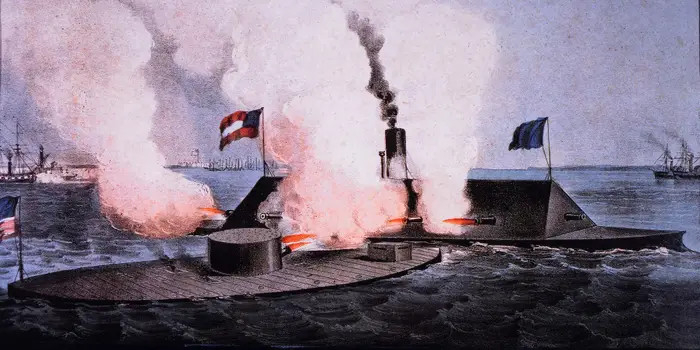
Business Insider 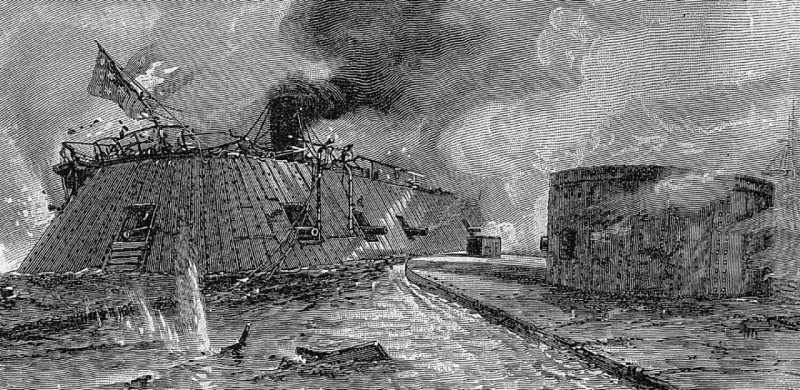
American Battlefield Trust -
Shortly after its launch, the Monitor was hustled down to Hampton Roads, leaving little time for testing this novel, radical weapon system. The Monitor was launched with two smaller 11-inch Dahlgren naval guns inside its armored, rotating turret, despite being built to hold two 12-inch Dahlgren naval guns. These were housed in a cylindrical turret that measured 20 feet (6.1 meters) in diameter, 9 feet (2.7 meters) in height, and had an 8 in (200 mm) thick iron roof. A steam engine that could be operated by one man revolved the entire structure around a central spindle.
Each of the 11-inch cannons was limited to employing 15-lb gunpowder charges in order to prevent any catastrophic gun explosion inside the small turret. The 165lb solid shot rounds did a lot to dent and disfigure the armor plating of Virginia even with this lower gunpowder charge. Later testing performed after the war revealed that the Monitor's 11-inch guns would have easily penetrated Virginia's hull at close ranges if it had utilized 25lb or 30lb gunpowder charges.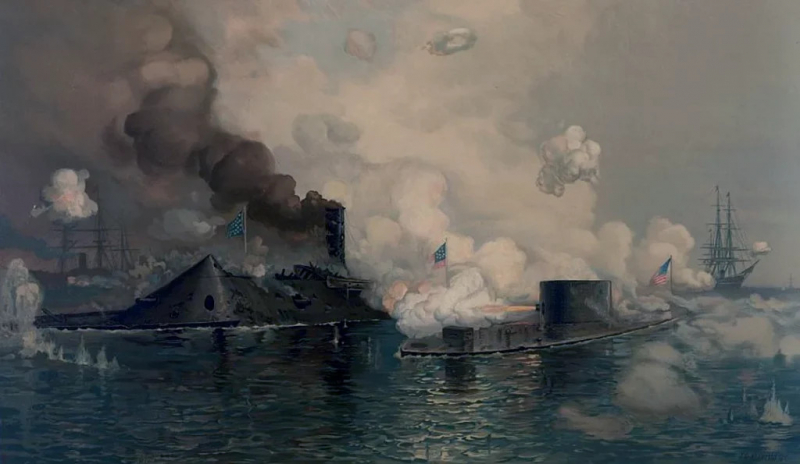
American History Central 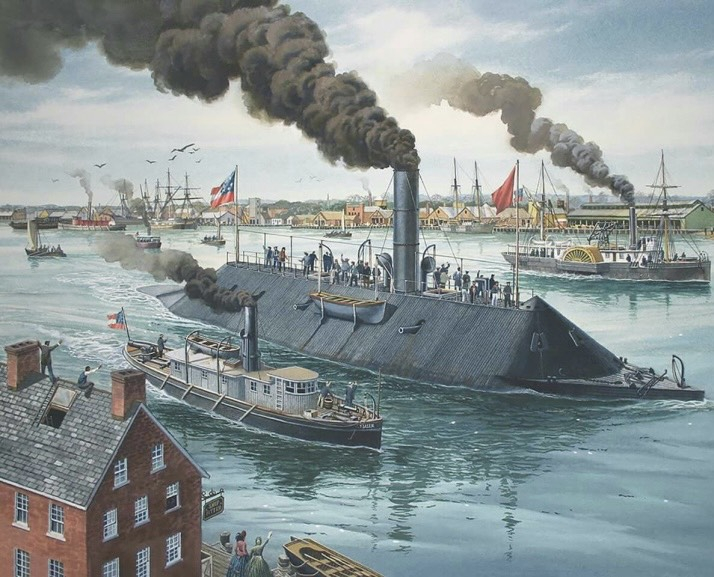
Pinterest -
Virginia has only equipped the explosive shell because it was anticipated that she would only encounter wooden ships. Double plates, each 2 in (51 mm) thick, were used in place of the armor plating, which was initially intended to be 1 in (25 mm) thick and be supported by 24 in (61 cm) of iron and pine. 14 gunports—four on each broadside, three front, and three aft—were punched through the armor.
When fully loaded, Virginia's iron plate barely reached its waterline, in contrast to the Monitor, whose belt of armor extended well below its waterline. Virginia would use 350lbs of ordnance each broadside. Virginia also reduced its cargo by 5 tons after two hours of shooting on the Monitor and other adjacent ships. Ironically, the ship's vulnerability increased as it got lighter. The ship's unprotected sides below the iron casemate could have been more easily pierced because they were more visible above the water as it became lighter.
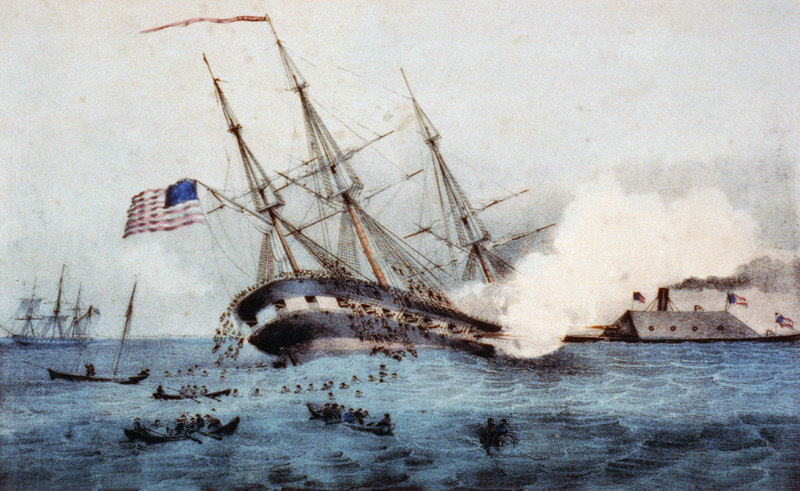
Totally History 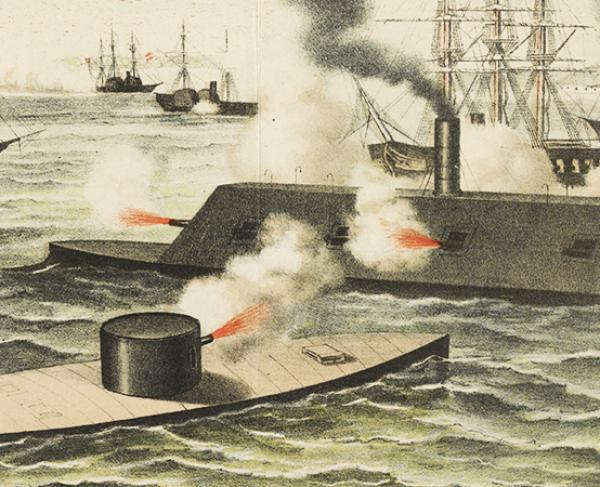
American Battlefield Trust -
Both John L. Worden and Franklin Buchanan were appointed as superintendents of the United States Naval Academy in Annapolis, Maryland. John L. Between 1 December 1869 and 22 September 1874, John L. Worden served as the commandant of the United States Naval Academy and was later elevated to the rank of rear admiral. In the Battle of Hampton Roads, he was known for commanding the USS Monitor, and from 1875 to 1877, he oversaw the European Squadron.
Franklin Buchanan served as the United States Naval Academy's first superintendent from 3 September 1845 until 8 March 1847, just before the Civil War. It is well known that he oversaw the USS Susquehanna's command during the Perry Expedition. became the Confederate Navy's sole full admiral during the American Civil War. Additionally, he oversaw the powerful CSS Virginia. After this illustrious Confederate admiral, the Academy superintendents currently reside in the imposing Buchanan House.
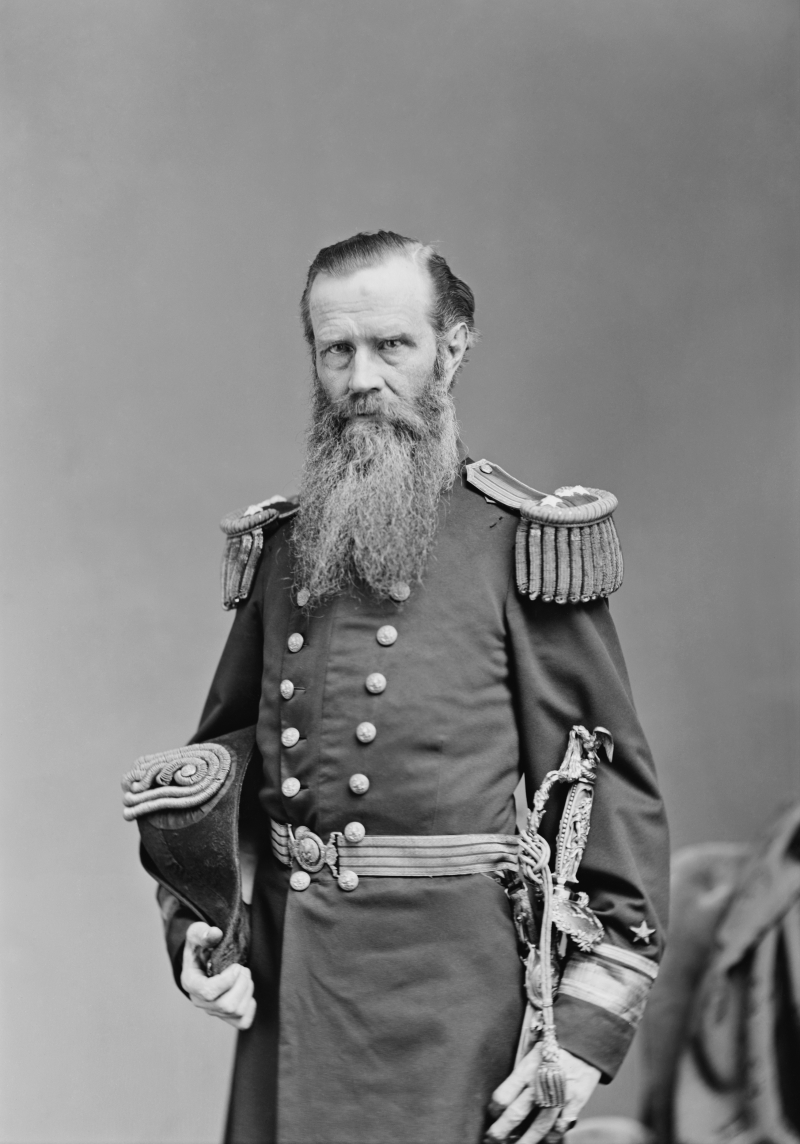
Wikipedia 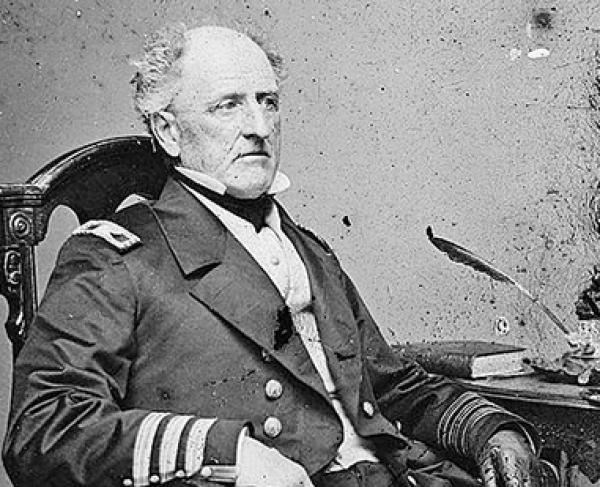
American Battlefield Trust












